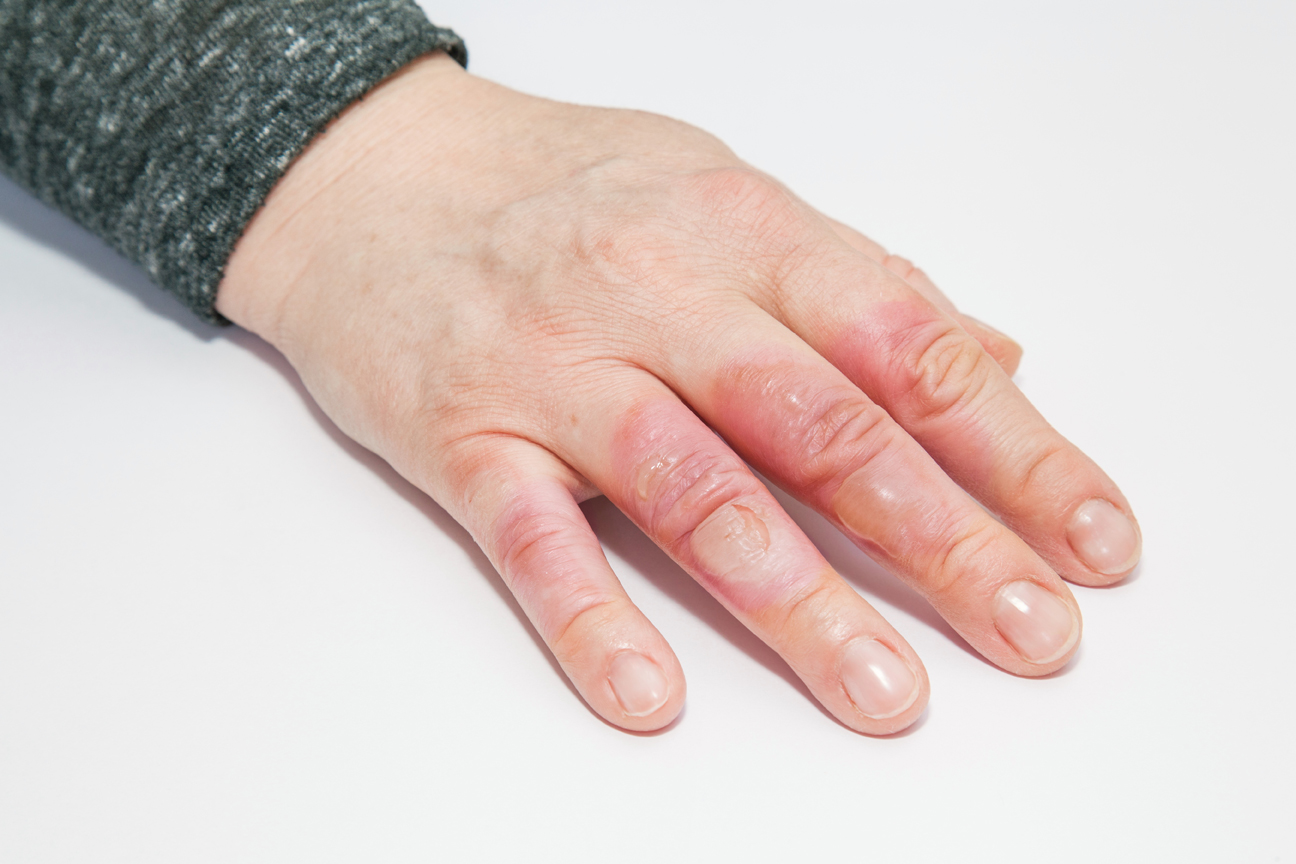According to the American Burn Association (ABA), nearly 450,000 people a year experience burns that require medical treatment. Although the level, or degree, of a burn can range from person to person based on how the burn occurred, there are various symptoms to be mindful of after getting burned.
The most common cause of burns is direct contact with a fire or flame. Other burns occur due to exposure to various heat sources like scalding water, hot grease from a pan, steam, and, in some cases, even too much direct exposure to the sun, especially in the warmer months.
Second-degree burns are the most common type of burn each year and may require medical treatment based on the symptoms you experience and the size of the affected area.
What is a second-degree burn?
A second-degree burn affects the epidermis and dermis, the top two layers of your skin. It is often referred to as a partial thickness burn. It is most notably characterized by a moist or wet look on the surface of the affected area. Blisters are also common signs of this type of burn.
What are the signs and symptoms of a second-degree burn?
Although wet, shiny, and blistered skin is the most common indicator of a second-degree burn, there are other symptoms to be on the lookout for.
Symptoms of second-degree burns include:
- Deep redness on the affected area and adjacent skin
- Skin that is painful to the touch after exposure to heat, chemicals or flames
- An irregular pattern of white or discolored skin on the affected area
- Swelling
In some instances, deep second-degree burns may cause scarring.
How do I treat a second-degree burn?
Treatment for a second-degree burn is based mainly on the severity of symptoms experienced.
Although some second-degree burns can be treated at home, most require a visit to a medical professional for further evaluation and comprehensive treatment.
The most common ways to treat a second-degree burn that doesn’t cover more than 10% of your body may include:
- Running cool water over the affected area for 20 minutes
- Washing the affected area with mild soap and water
- Applying a cool compress or wet cloth over the burn area in 5 to 15-minute intervals to relieve pain and reduce swelling
- Using a topical over-the-counter antibiotic ointment like Bacitracin or Neosporin to the burn
- Taking an over-the-counter pain reliever
- Dressing changes one or two times a day depending on the severity of the burn
- Daily cleaning of the wound to remove dead skin or ointment
In some cases, doctors may prescribe a topical or oral antibiotic to promote healing.
Typically, superficial second-degree burns heal entirely within 3 weeks. In some instances, healing may take longer.
What are the other types of burns?
First-degree burns affect the top layer of the skin and are the most minimal type of burn. They cause minor redness, pain and swelling and can often heal on their own at home.
Third-degree burns are the most severe type of burn affecting all three layers of the skin. They can penetrate so deeply that they sometimes affect underlying nerves, tissue, muscles and bones. If you suspect that you are experiencing a third-degree burn, call 9-1-1 immediately.
When to visit Amory Urgent Care
If symptoms do not improve, or if they worsen as the days progress, you should visit Amory Urgent Care today, especially if you believe the burn is infected.
It is critical to be seen if you experience:
- A fever
- Any change in color of the burnt area or the surrounding skin
- Persistent swelling
- Purplish discoloration
- Increased thickness of the burn
- Green discharge or pus
Seek emergency medical care immediately for:
- Burns that cover the hands, feet, face, groin, buttocks, a major joint, or a large area of the body
- Burns that cause the skin to look leathery
- Burns that appear charred or have patches of black or brown
- Burns caused by chemicals or electricity
- Difficulty breathing or burns to the airway
Visit Amory Urgent Care to get the treatment you need for your second-degree burn today. We welcome walk-in appointments seven days a week to help you feel better sooner.

